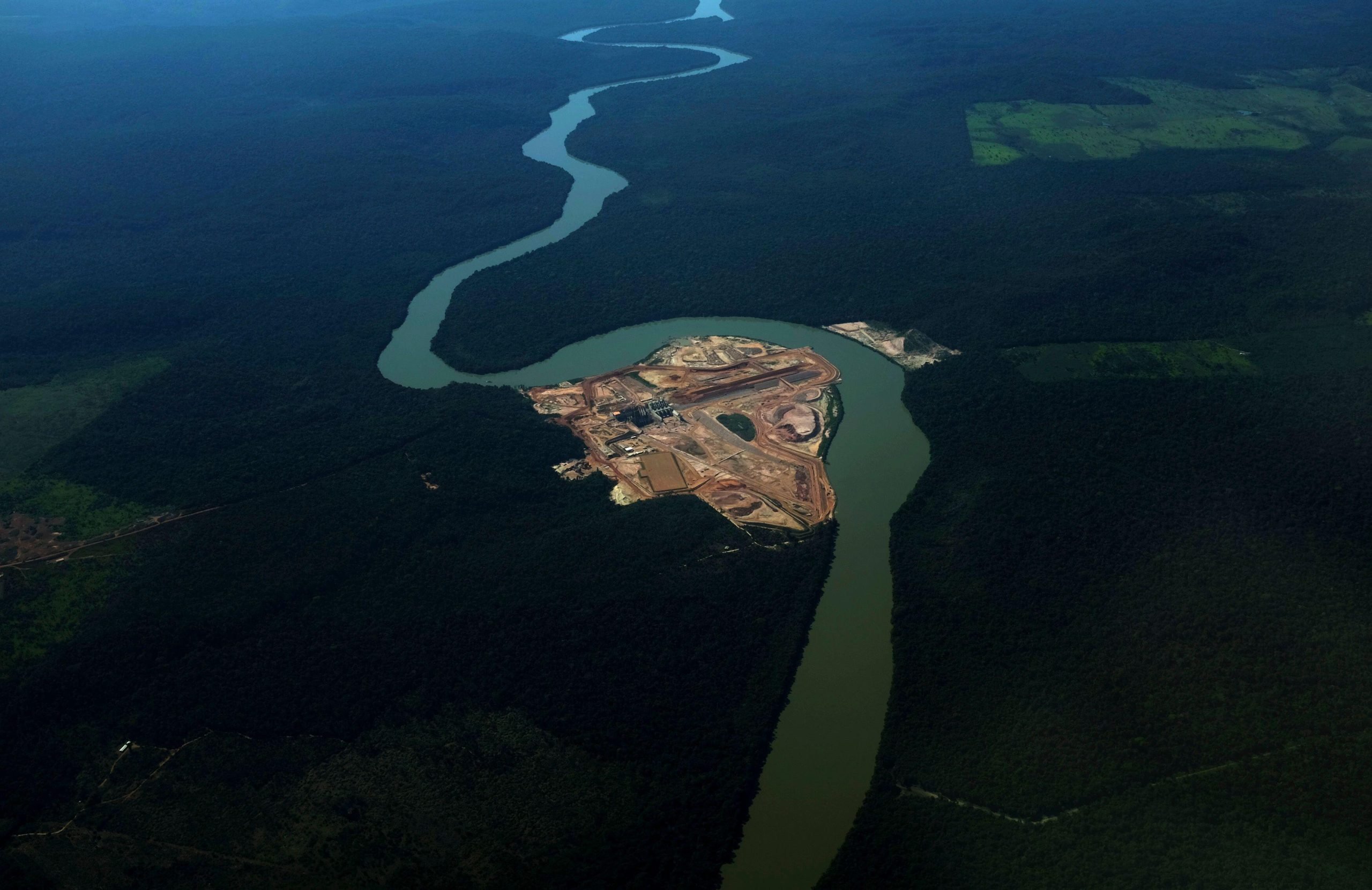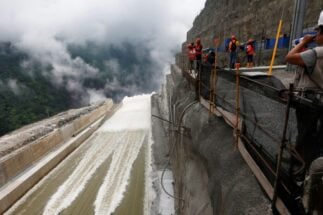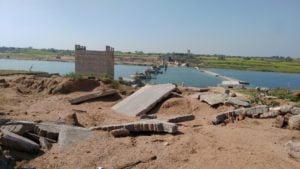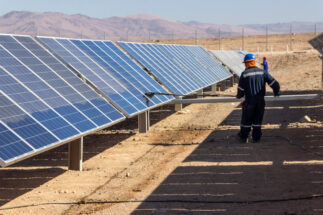The construction of Colombia’s largest hydroelectric dam, the Hidroituango, hasn’t been straightforward. In many ways, it’s been something of a catastrophe. Due to the various delays in its construction and an increasing awareness of the enormous socio-environmental impacts it has brought about, many observers believe it will likely be the last large dam project seen in the country for some time to come.
The controversial project has cost 16.2 trillion pesos (US$4.1 billion) funded partly with Chinese capital. Finance came from the China Co-financing Fund for Latin America and the Caribbean, administered by the Inter-American Development Bank and the Industrial and Commercial Bank of China.
16.2 trillion pesos
The cost of the Hidroituango dam, roughly US$4.1 billion. Colombia’s largest hydroelectric dam, it is due to begin operations this November after a series of delays.
Construction of the 2,400-megawatt Hidroituango plant began in 2011, with the works carried out by Colombian firm Empresas Públicas de Medellín. But its completion is behind schedule: though it was due to begin generating power in July this year, this horizon has recently been pushed back to the end of November.
The dam has had high costs by other measures, too. Isabel Zuleta, an environmentalist and social leader from Ituango, the town on the Cauca River from which the dam takes its name, has described Hidroituango as “a socio-environmental disaster with international blame”. Zuleta, now a senator for the Pacto Histórico coalition that leads the polling for this month’s presidential elections, explains that the hydroelectric plant has pushed thousands of families into poverty, as well as seriously affecting biodiversity and the surrounding environment.
“Hidroituango was launched during a complex situation [for Colombia] and with such a sense of urgency, so most of the environmental impacts are negative,” says Santiago Ortega, a civil engineer and hydroelectric specialist with sustainable energy company Emergente. “It is assumed that the positive impacts will be seen from transactions [for power generated] and the operation of the project.”
Fears about the potential failure of the Hidroituango project have sparked debate over the need for large hydroelectric plants in Colombia, at a time when other energy options are becoming more attractive and more readily available.
Hydroelectric plants in Colombia
Hydroelectric plants generate 68% of electricity in Colombia, a country rich in water resources, with many areas seeing high rainfall and suitable topography for dams. Since the 1970s, such conditions have made these energy projects an attractive option, seen as a means to build capacity and promote development.
Since then, some 33 dams have been built in Colombia, notably those at Urra, Salvajina, Chivor and Guavio, among others. As specialists explain to Diálogo Chino, the low costs of hydroelectric production compared to nuclear power plants and the low emissions of polluting gases are the reasons for the Colombian government’s historic bent towards these energy generation alternatives.
However, according to Francisco Torres, a professor at Bogotá’s Universidad Distrital who focuses on land restoration, there were few prior studies carried out on the possible environmental impacts of this wave of hydroelectric dams, built in the second half of the 20th century. The effects only became more visible after the construction of further large dams at the beginning of this century, including Hidroituango or El Quimbo, in the southwest of the country.

José Ignacio Barrera, a biology and ecology researcher at the Pontificia Universidad Javeriana, explains that the socio-environmental impacts of Colombia’s dams are still considerable decades later. Even when there is progress in the restoration of the surrounding environment, its species and affected communities, there are changes that are difficult to reverse.
“The water dynamics of the ecosystem are changed. The impacts are in the loss of connectivity, and habitat for these species is lost,” Barrera says. “There is a gain on one side with the impact on energy production for the country, but there are immense effects.”
Santiago Ortega explains that it took time to learn about the impact of hydroelectric power plants – especially those impacts on the quality of life of the people. As an example, he points out that communities near large hydroelectric power plants, particularly San Carlos and San Rafael in the department on Antioquia, “have not felt the real benefits of having such a large energy production machine nearby.”
Professor Torres explains that these projects generate environmental and social impacts, but in order to make them viable it is necessary to see which ones can be corrected, mitigated or compensated. For example, construction on the El Quimbo dam, in the country’s south, began despite enormous opposition from nearby communities that were to be displaced by its arrival. Evictions were controversial, but the project went into operation at the end of 2015, and had an ecological restoration plan in place covering 11,000 hectares adjacent to the reservoir.
Torres explains that although the electricity generated by dams is cheaper than that from some other sources, many countries have moved away from the building of large hydropower plants due to the risks they pose in the areas they are established. The purchase of land, the costs of relocation and compensation for environmental impacts – not to mention the expense of construction itself – means that they end up being very costly, Torres says.
Similarly, there is no certainty about the future of these constructions and the reliability of their output in the face of climate change. Climate change impacts and exacerbates seasonality, with more rainfall in the wet season and less in the dry season, causing longer periods of drought, as the Latin American Energy Organization (OLADE) describes.
On the ecological side, as researchers from the University of Michigan told the Center for Sustainable Development Goals for Latin America, “there are hydroelectric dams being built in places where it is not known for sure how rich they are in fish and what the costs would be in biological or economic terms,” thus demanding further studies when developing these mega-works.
Controversial projects
One of the last large-capacity hydroelectric projects announced in Colombia is Talasa, a dam to be located on the Atrato River in Chocó – a jungle region at the Panamanian border, often overlooked by the state and plagued by the country’s long-running armed conflict.
In this inhospitable region, the Chinese company CTGI, a subsidiary of the giant China Three Gorges Corporation, is planning the construction of the Talasa hydroelectric dam. Details on the project are so far extremely light, including on its possible environmental impacts; the only thing that is known is its planned installed capacity of 168 MW.
68%
of electricity in Colombia is generated using hydropower
Little more is known about the Talasa project, but a resolution was issued through the Ministry of Environment and Sustainable Development in August 2021, that allows for an extension of a “temporary” reduction of the area of the protected Pacific Forest Reserve, for more than 50 hectares in the area where the project would be sited.
Diálogo Chino sought comment from the Colombian government’s National Environmental Licensing Authority (ANLA), but received no response.
In a 2020 report on Chinese investment in Colombia, researcher David Cruz of the Asociación Ambiente y Sociedad, a Colombian NGO, highlighted concerns around projects such as the Hidroituango project that been financed with public-private partnership (PPP) capital: “In Colombia, some problems have been identified related to high construction costs, a lack of transparency in the negotiation of contracts, their limitations in preventing impacts on the environment and the limited guarantee of participation of the populations involved.”
Where is energy in Colombia headed?
Given the high socio-environmental costs of hydroelectric plants, and after the Hidroituango experience, experts agree that it is unlikely that large dams will be built again in Colombia.
This does not mean that the country’s water potential will not be exploited, however. “Now, they [the government] prefer smaller generation projects with a more focussed impact, that do not affect such large areas,” professor Torres explains. He points to generation projects through smaller-scale power plants, in addition to wind and solar projects that reduce social and environmental impacts.
Santiago Ortega is of the same opinion. “There was a larger hydroelectric project of 300 megawatts that was ready to be built, but they abandoned it,” he says, referring to the Porvenir II project in Antioquia. “I think this is a very strong signal.”
The Porvenir II project, belonging to Colombia firm Celsia, had an environmental license to proceed with construction granted in 2015, but has long seen strong opposition from the communities in the surrounding region of Magdalena Medio Antioquia. The company itself accepted that one of the main reasons why it wants to sell the project is because it wants to invest in renewable energies.
Ortega explains that the most interesting energy generation projects can be seen in other scenarios: wind projects in Guajira, solar parks along the Caribbean coast and smaller-scale projects scattered throughout the country.
Companies are thinking about the most ecologically viable energy sources, because they are aware of the damage that has been done
“Today the sector is in a process of decentralisation and what we can begin to see, which is very interesting, are projects on roofs, in homes and businesses – industries that at the moment of truth can add up and do great things,” Ortega adds. He gives the example of Vietnam, a country that in one year built 9 GW of rooftop solar capacity – an impressive figure, compared to the 2.4 GW capacity of the troubled Hidroituango dam.
Even so, Ortega defends keeping large hydroelectric plants as part of Colombia’s near-term energy mix: “A problem with solar and wind power plants is that the energy cannot be stored, but a reservoir is like a very large battery. So, reservoirs will help us to reach this decarbonisation of the energy mix much faster.”
José Ignacio Barrera, for his part, believes that the path towards these clean energies has no turning back. “The discussion is already taking place in Colombia about which are the cleanest and most ecologically viable sources of energy production. The companies themselves are thinking about it, because they are aware of the damage that has been done.”








